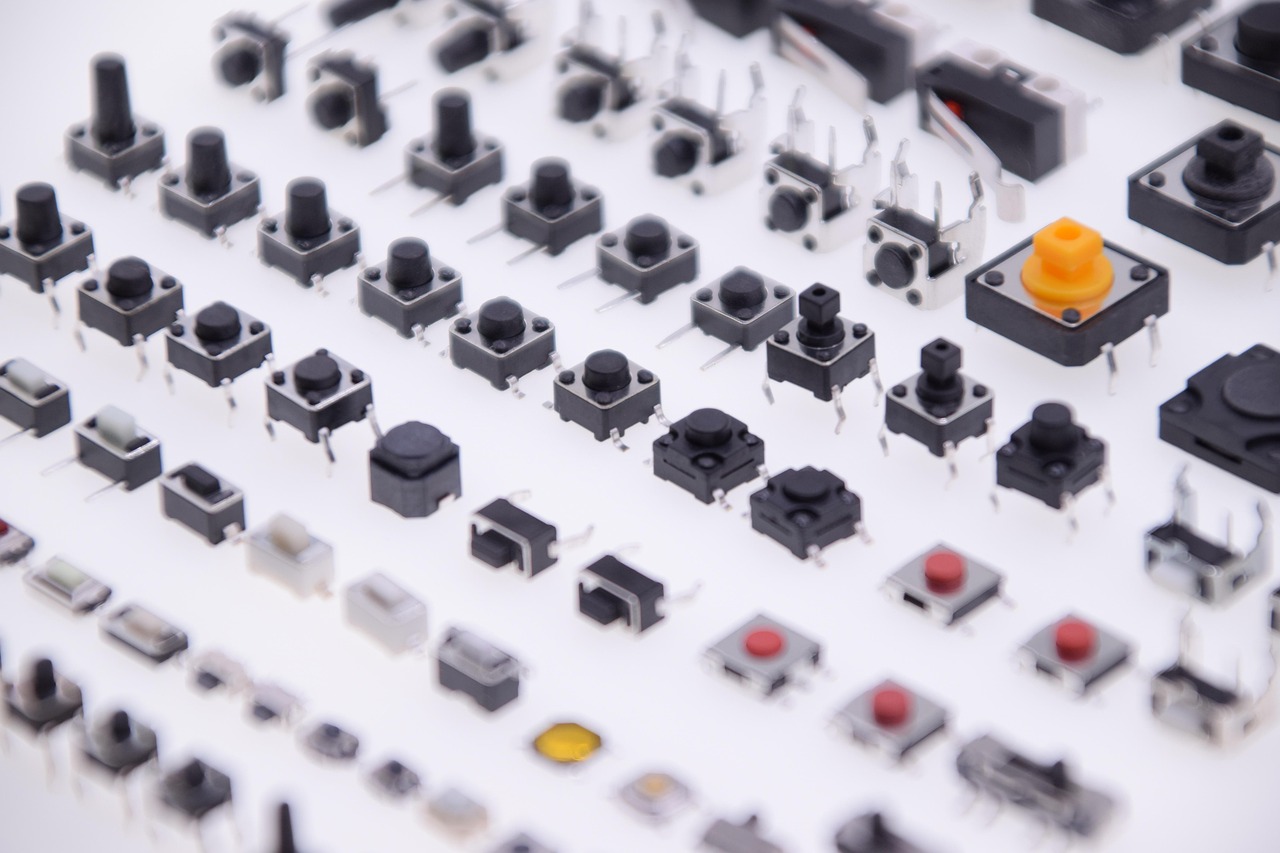Table of Contents
Toggle雙酚A
在現今的高科技產業中,「電子級材料」是一個非常講究且發展快速的領域。從智慧型手機、雲端伺服器到電動車、車用雷達、5G 通訊設備與高頻基地台,每一塊電路板、每一顆晶片背後,都仰賴無數精密而關鍵的材料組成與運作協調。這些裝置運作的速度愈快、運算密度愈高,就愈需要材料具備極高的純度與穩定性。
在這樣的需求驅動下,雙酚A(BPA)這個原本在塑膠與塗料產業中常見的傳統石化單體,也正在科技產業中扮演越來越重要的角色。特別是當雙酚A被精煉到「高純度」等級後,不再只是單純的化學品,而是一種能支撐電子元件高效運作的關鍵原料。舉凡電子級環氧樹脂、晶片封裝材料、複合高頻基材、甚至感測器模組,其上游材料常常都與雙酚A密切相關。
簡單來說,傳統的雙酚A是基礎,但高純度雙酚A則是邁入電子級應用的門票,甚至是性能突破的起點。
雙酚A的角色:電子材料的骨幹
雙酚A是一種結構穩定、反應性良好的有機化合物,擁有兩個酚基結構,使其在聚合反應中表現出高度可控制性與反應選擇性。它最主要的用途是製造聚碳酸酯(PC)和環氧樹脂。這兩種材料都是電子產業的基石:聚碳酸酯具有優異的透明度與耐衝擊性,常見於光學元件、感測器外殼、LED導光罩與高階鏡頭包覆材料;而環氧樹脂則具有絕佳的接著性、尺寸穩定性與絕緣性,成為印刷電路板(PCB)基板與半導體封裝膠的核心材料。
隨著電子產品朝向小型化、高頻率與高功率密度的方向發展,材料的「純淨度」與「一致性」變得愈來愈重要。電子級應用不同於一般工業用途,它對於微量雜質的容忍度極低。因為只要一點點雜質,就可能在極端條件下引發電性異常、導熱阻礙,甚至在高頻運作下造成訊號干擾或邊緣效應失真。例如,電路板若使用含有微量金屬離子的環氧體系,可能會在長時間高溫運作後出現微裂、擊穿或腐蝕現象。
因此,電子產業對於「高純度雙酚A」的需求不只是量的增加,而是質的升級。產業端不再僅要求供應商提供雙酚A單體,更進一步要求控制其反應副產物、雜質殘留、色度穩定性與長期儲存穩定性,甚至進入材料全生命周期的品管管理中。
為什麼要高純度?關鍵在雜質
在製作電子級環氧樹脂時,雜質會直接影響到樹脂的交聯程度、熱穩定性與介電常數。不論是在材料合成過程、儲存穩定性、或最終產品性能上,這些微量成分都可能放大為系統級的缺陷或故障點。以下是幾個會被特別關注的雜質項目,每一項都有其背後的機理與潛在風險:
- 游離酚類殘留:未參與反應的酚類會在聚合物鏈中造成斷裂點,導致交聯網絡結構不完整,這會降低成品的機械強度、耐熱溫度與長期使用壽命。此外,這些游離酚也可能在儲存過程中產生黃化反應,影響材料外觀與光穩定性。
- 重金屬離子:像是鐵、鋅、鈣等金屬離子會擾亂樹脂的介電均勻性,導致漏電、介電損失增加,甚至可能在 IC 封裝中形成電化學腐蝕現象。尤其對於高頻應用而言,即使是 ppb 級的金屬污染也可能引起訊號反射或雜訊干擾。
- 氯化物:氯離子與其他鹵素殘留,會在加熱或高濕環境中加速水解反應或脫鹵過程,進而釋放具腐蝕性的副產物,如 HCl。這些副產物可能侵蝕導體、封裝層或晶片表面,導致元件失效。
- 色度雜質:除了影響外觀之外,色度的穩定性常與原料中微量氧化副產物有關,這些物質在光學模組或高亮度背光系統中會造成散光、霧化,甚至光阻吸收問題,進一步干擾元件效率與訊號準確性。
因此,對高純度雙酚A供應商而言,對這些雜質的監控不只是出廠檢驗的工作,而應該成為貫穿整條製程的品質設計核心,包括原料篩選、製程中間分析、設備潔淨維護與長期穩定性測試等,缺一不可。
高純度雙酚A的製程挑戰
要做到電子級等級的雙酚A,製程控制必須非常精密且系統化,這不只是對產品「結果」的檢驗,更是整體生產流程「過程能力」的展現。從反應原料的選擇、催化劑的純度,到反應條件(如溫度、時間、pH值、攪拌速率)的微調,每一個細節都可能影響最終產品的穩定性與一致性。電子級應用對「再現性」的要求極高,因此「批與批之間的一致性」往往比一次性達標還更具挑戰。
- 精餾與脫酚技術:必須使用高效能分離設備(如多級薄膜蒸餾塔、脫酚塔與分子篩吸附裝置),將游離酚、未反應單體與副產物徹底分離,達到 ppb(十億分之一)等級的淨化標準。這同時也要求操作條件要穩定,並定期進行設備交叉污染風險評估。
- 濾除微粒與重金屬:採用高階濾材(如亞微米級過濾膜)與螯合劑技術,確保產品中不含任何可能造成導電或反應異常的金屬與懸浮粒子。部分製程更需整合連續濾清線與自動檢測模組,以提升良率與降低人為誤差。
- 潔淨生產環境:建構類似半導體等級的潔淨室條件,包括空氣過濾、設備材質選用(如不鏽鋼、PTFE 材質)、靜電控制與防塵設計,從根本降低再污染風險。此外,定期的潔淨度監測與員工操作標準化,也是維持整體製程穩定性的關鍵要素之一。
透過這樣層層把關的製程管理,才能確保高純度雙酚A不僅符合電子級技術規格,更具備長期供應的一致品質,成為下游電子材料研發的穩定基礎。
與客戶共同開發:關鍵不只在產品,更在信任
高純度雙酚A的價值,不僅體現在其物化特性,更體現在它與下游應用之間的「連結深度」與「技術對接能力」。過去材料供應商的角色多半停留在原料銷售與規格說明,但現今的電子材料研發流程已轉向高度整合的模式,講求「共創」與「同步開發」。這表示材料提供者不再只是交貨者,而是從設計初期就參與的技術夥伴,甚至是客戶產品創新過程中的共同推進者。
許多電子材料客戶其實不只是「購買雙酚A」,他們更希望與供應商建立能共同承擔開發風險與挑戰的合作關係,例如:
- 配方優化:根據產品應用的熱傳導、介電常數、機械強度或固化速率需求,協助客戶設計出最適化的環氧或聚碳酸酯樹脂體系,並針對不同基材調整反應性與黏度,縮短測試週期;
- 試產協作:不只是供應原料,而是提供打樣設備或分析人力資源,從小試放大、中試規模量產,逐步掌握反應條件、品質穩定性與產線適配性,並共同建立 SOP 與品檢機制;
- 符合法規與認證流程:協助客戶針對 IPC、UL、ROHS、REACH、TSCA、PFAS 禁限清單等國際法規做出材料選擇與替代設計建議,甚至提供材料安全性文件(MSDS)、LCM 資料或加速老化測試報告;
- 故障分析支援:當客戶在成品端遇到裂解、濕氣侵入、晶片封裝分層、色偏或介電失衡等問題時,供應商也能進一步支援 FTIR、TGA、GC-MS、XRF 等分析工具,快速定位材料異常根源,提出改善建議。
這樣的合作模式,需要供應商具備跨部門協作能力、應用材料背景知識、儀器操作能力與快速應變機制,才能在第一時間為客戶提供技術支援與商業信任。唯有如此,材料供應者才能真正走進客戶的產品開發流程,從「供應商」晉升為「研發共創者」,建立長期穩定的夥伴關係。
小結:電子級雙酚A,是挑戰也是機會
隨著先進封裝、5G、AIoT、高效能運算(HPC)等領域持續推進,電子產業對材料的要求正進入前所未有的高門檻時代。除了基本的機械強度與穩定性,材料的純度、絕緣性、介電特性與熱穩定性,甚至反應速率與分子量分布的精準控制,都成為關鍵競爭要素。「高純度雙酚A」正是在這波技術演進浪潮中不可或缺的基礎單體,它不只是化工原料,更是連結材料科學與半導體製程的關鍵橋梁,扮演起從電子級環氧樹脂到先進封裝介質的性能核心。
對供應商而言,這是一場從「賣原料」到「參與創新」的升級挑戰,更是一項橫跨技術、品質與應用支援的整合考驗。過去單一產品規格的銷售模式,已無法滿足客戶對「共同開發」、「即時反饋」與「長期支援」的期待。現在的材料供應商必須能夠理解客戶的整體製程邏輯,提供精準調配的產品方案,並擁有快速反應與跨部門協作的能力。
對研發單位來說,找到一位不只熟悉材料根源,更能投入應用共創的合作夥伴,將是推動下一代產品快速上市、提升競爭力的加速器。這樣的夥伴不僅提供原料,更能從材料選型、應用測試、到可靠性評估全程協作。
在這場產業轉型與技術升級的過程中,雙酚A不再只是化學品的代名詞,而是一種驅動創新的材料語言。掌握它的純度、穩定性與延伸應用,就如同掌握了高階電子應用的發球權與節奏控制權。未來的材料競爭,不在於誰擁有最多原料,而是誰能以材料為基礎,啟動整個創新價值鏈的推進引擎。
📩 聯絡我們,開啟您產品升級的新可能。
104070 台灣台北市中山區松江路 301 號 7 樓






